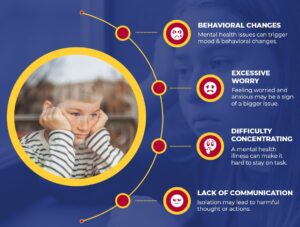Nurturing Young Minds: A Guide for Primary Teachers on Mental Health Awareness
In the bustling world of primary education, where every day is a vibrant mix of learning and discovery, the mental well-being of our young learners often takes centre stage. As dedicated educators, it’s our privilege and responsibility to nurture not just the academic, but also the emotional and psychological growth of our students. In this insightful journey, we delve into identifying and addressing mental health needs in primary schools, a vital aspect of fostering a supportive and thriving learning environment.
Understanding Mental Health in Young Learners

https://www.nhs.uk/every-mind-matters/supporting-others/childrens-mental-health/
https://childmind.org/symptomchecker/
Strategies for Supporting Mental Health in the Classroom
Empathy and understanding lay the foundation for addressing mental health in primary schools. Tailoring our approach to suit the developmental stages of KS1 and KS2 pupils is essential. Simple yet effective strategies can include:
The Role of Positive Reinforcement
Positive reinforcement goes a long way in boosting a child’s self-esteem and confidence. Simple gestures like verbal praise, reward systems, and the use of motivational stickers can have a profound impact. These tokens of recognition not only celebrate achievements but also serve as visual and tangible reminders of their capabilities and worth. [Link to a study or article on positive reinforcement]
Building a Collaborative Support System

Some Final Thoughts
As we navigate the complexities of mental health in primary education, let’s remember that our role transcends beyond teaching. We are the custodians of our future generation’s well-being. Each step we take, no matter how small, in recognizing and addressing mental health needs, paves the way for a healthier, more resilient generation.
Stay tuned for our next blog post, where we will explore the role of positive reinforcement in fostering student well-being.